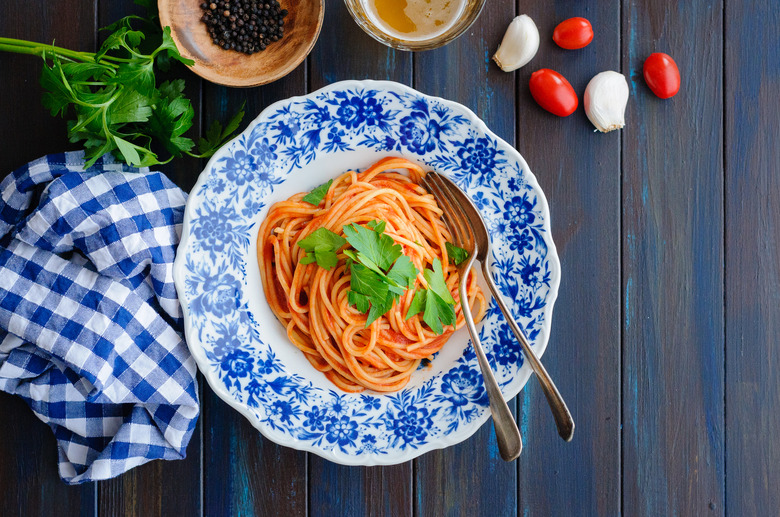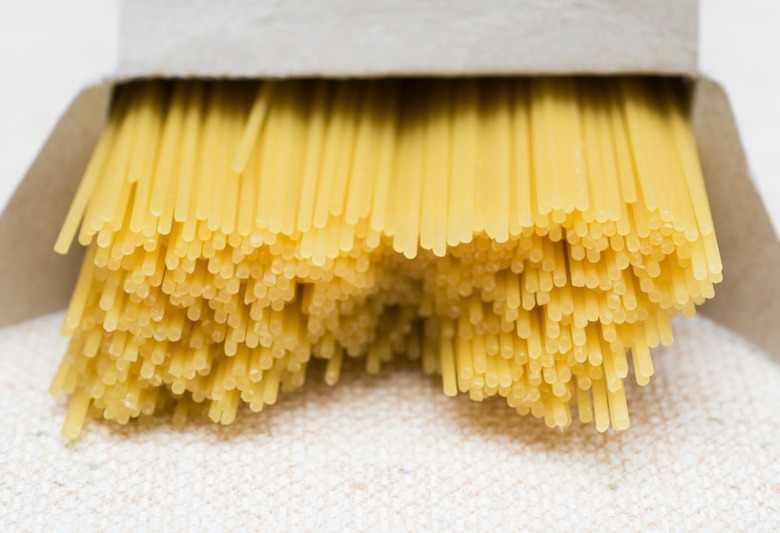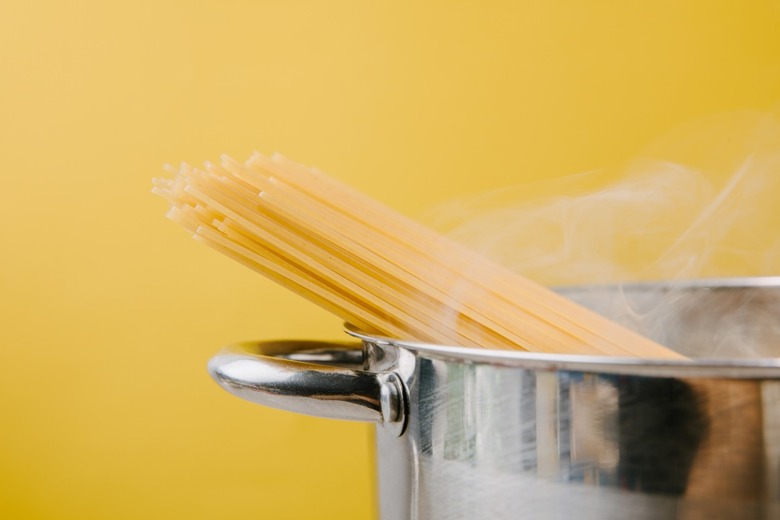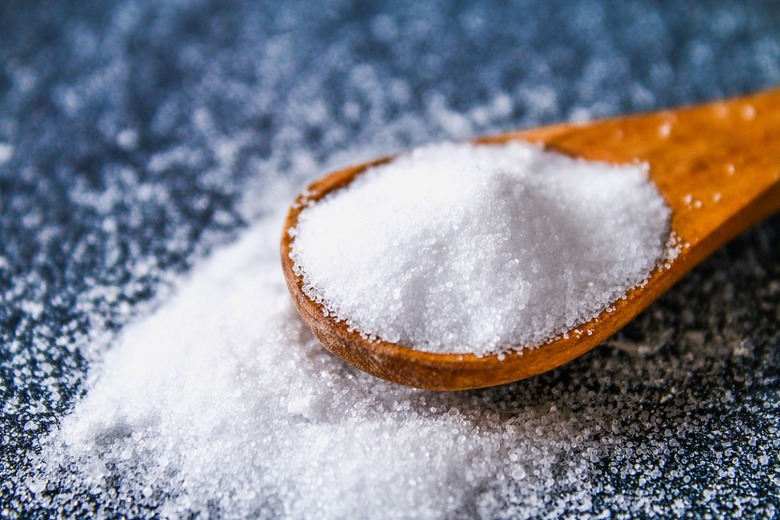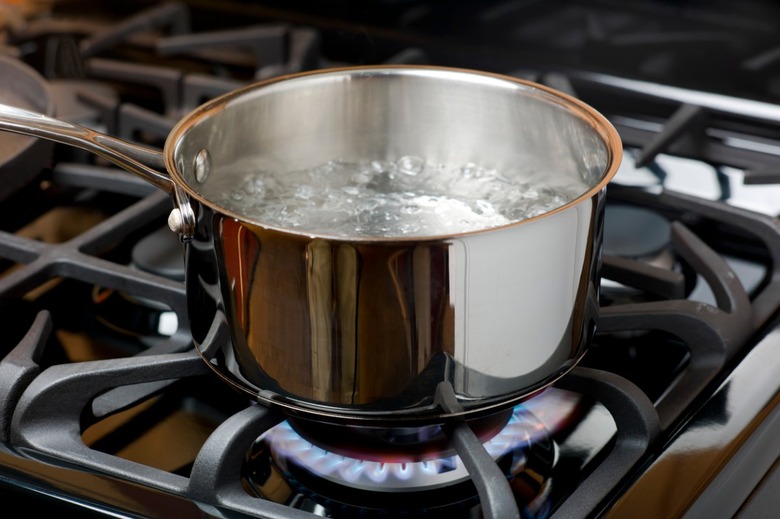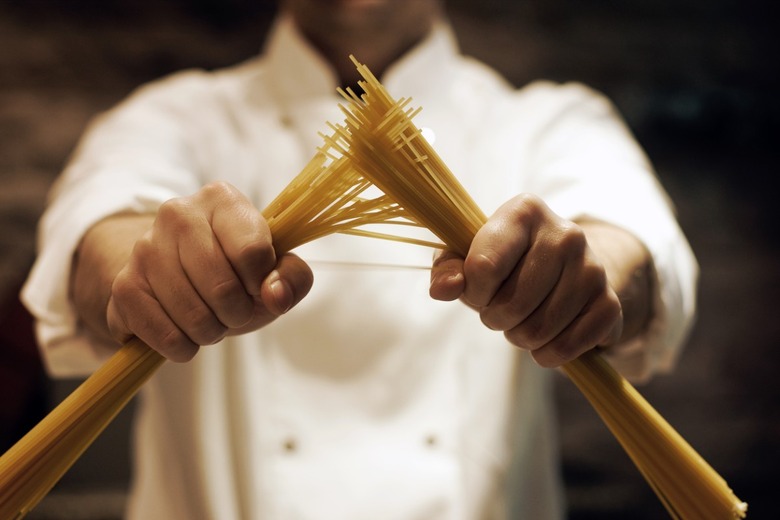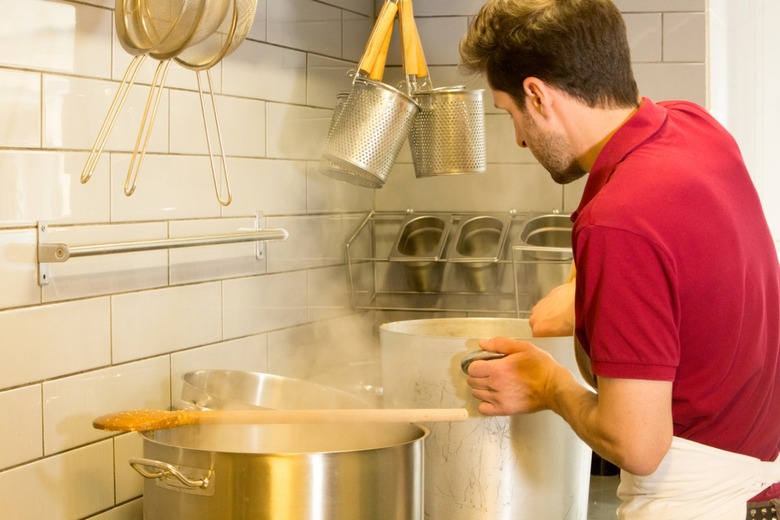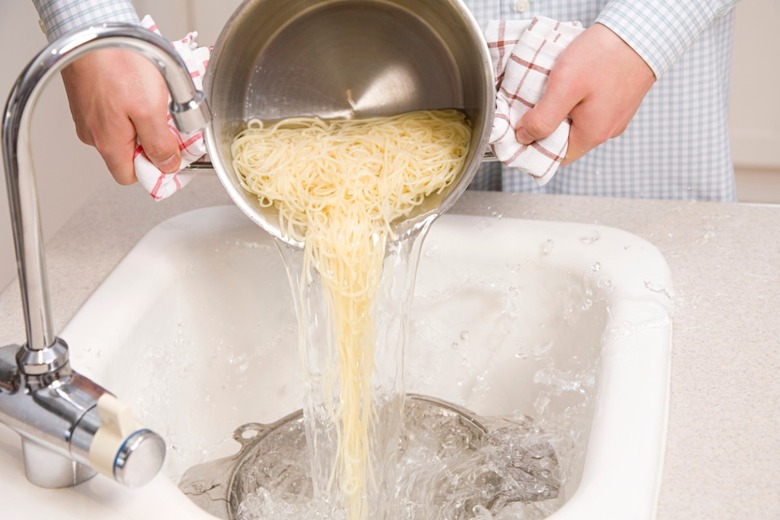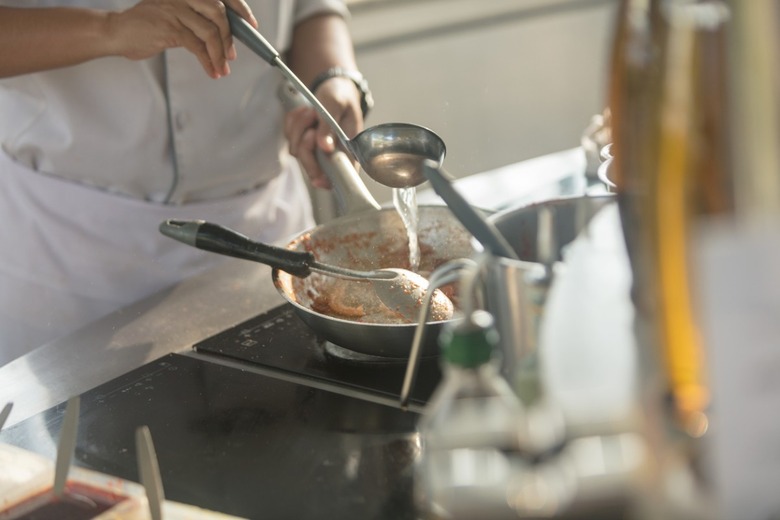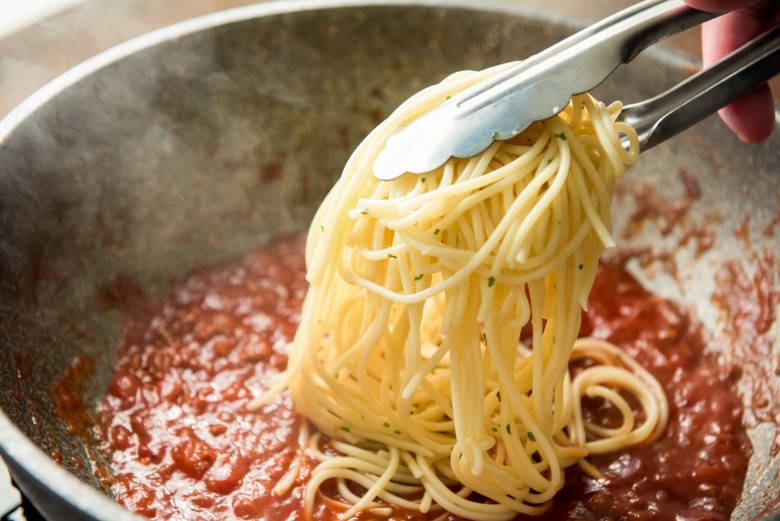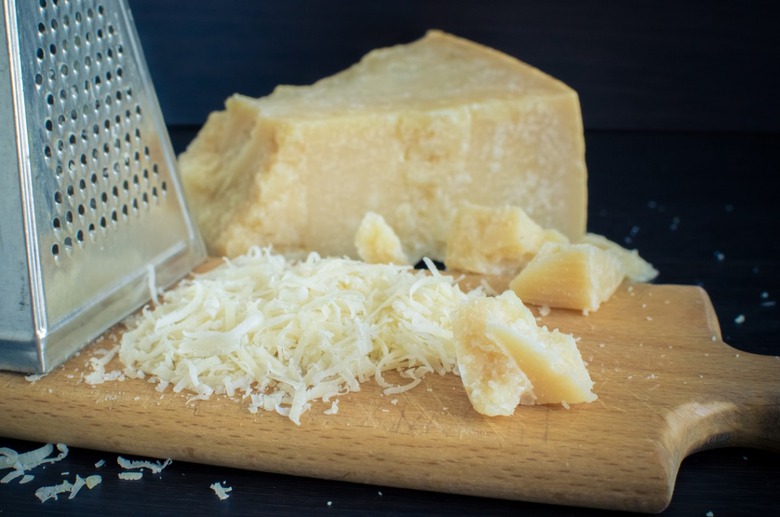How To Cook Spaghetti Perfectly Every Time
Pasta in itself is a wonderful thing. Few foods can compete with pasta's pure gastronomic perfection. Within the pasta pantheon, spaghetti is perhaps the greatest shape of all — a long, skinny noodle that is pure joy to eat. Topped with meatballs and marinara, tossed together with eggs for classic carbonara or simply dressed with garlic and olive oil, when done right, it's tough to top. Few dishes can compete with a big bowl of perfectly cooked spaghetti.
Spaghetti isn't hard to cook, and yet time and time again, people get it wrong. Follow these simple steps and you'll only make perfect spaghetti from here on out.
Choose Your Spaghetti
When it comes to spaghetti, it's not a simple case of just buying a single ingredient. There are many different brands of spaghetti one can purchase, and not all are created equally. Try out different brands and even sizes of spaghetti and discover which ones you prefer to cook and eat.
Use a Big Enough Pot
Most people don't use a large enough pot when they cook spaghetti. Sure, it's tedious to get down that large stock pot that rarely gets used, but make the extra effort and get it on the stove. Your spaghetti needs room to move and cook evenly, so using a pot that gives it space is imperative.
Season Liberally with Salt
Once a large pot is filled with water, it's important to season the water liberally with salt. (Nothing fancy — kosher salt is perfect for this job.) You want the water to taste as salty as the ocean, but that's not to say you want it to taste like the Dead Sea. It should be salty but not so salty as to make you feel sick upon sampling a spoonful. Not salting the water at all will leave you with bland noodles and ruin everything. Nobody likes a bland noodle, right?
Wait for the Water to Boil
Waiting for the water to come to a rolling boil may seem like a no-brainer, but you'd be surprised by how many don't know that this is a crucial step that should not be overlooked. Sure, some mavericks like Alton Brown might say that they cook perfect pasta in cold water. But who should you trust? One person or an entire country?
Don’t Break your Spaghetti
OK, so this might not affect the end result dramatically, but the goal is to make perfect pasta, right? Ergo, do not snap in half! No matter how tempting those one-pot pasta recipes on Instagram look — do not do it!
Stir the Noodles
Once the noodles are cooking merrily away, do not assume it's time to simply abandon your pasta post. Give the spaghetti a gentle but decisive stir occasionally (and particularly in the very beginning of its time in the pot) to prevent any spaghetti stick-age from occurring.
Don’t Overcook your Pasta
Most boxes and bags of pasta, whether fresh or dry, come with cooking times printed on them. However, frequently these cooking time suggestions will leave you with pasta that is not really al dente. A good rule of thumb is to check your spaghetti a full minute or two before the earliest time suggested. If it still has a bit of crunch and seems to be a few minutes away from pasta perfection, that's the time to turn off the heat and drain those noodles.
Don’t Rinse your Noodles
As you stand over the sink, please resist all urges you might have to rinse the spaghetti. You absolutely need the starch that clings to the noodles in order to make the sauce (more on that later) the best it can be. Simply drain the spaghetti and don't turn on the tap!
Save Some Pasta Water
Finish your Spaghetti in the Sauce
Now is the time to bring everything together. Rather than pouring a sauce over the spaghetti, it's time to finish cooking the noodles (which we undercooked by a minute or two, remember?) in the sauce itself. Make sure the sauce is in a pan that can accommodate the spaghetti, and as soon as the noodles are drained, simply chuck them in with the sauce. Mix everything together and add some of the reserved pasta cooking water to thin things out and add some of the highly desirable starchiness to the mix. Stir fairly vigorously to encourage the starch on the pasta to emulsify into the sauce, which will leave you with a panful of saucy pasta that is one harmonious dish rather than two separate components
Add Fats Last
Lastly, just before the pasta is ready to plate, add fats, with the heat off! This means tablespoon or two of butter, a generous drizzle of olive oil and a handful of grated cheese. Add any or all of these tasty fats and watch the spaghetti and sauce become luscious and rich. And that's all there is to it: Treat your spaghetti with respect and cook it properly, and you will have a rich arsenal of perfect pasta recipes for any occasion.
More From The Daily Meal:
Pasta Recipes Like Grandma Used to Make
15 Foods You've Been Cooking Wrong This Entire Time
The Best Italian Restaurant in Every State
You've Been Defrosting Your Food All Wrong — Here's How to Do It Right
Ree Drummond and 16 Other Celebrity Chefs on the Perfect Scrambled Eggs
